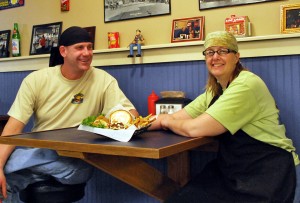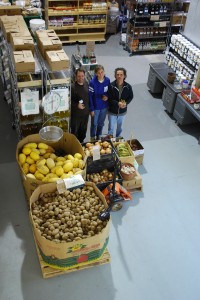by Richard Markosian
We hear it in the news all the time, “banks aren’t lending.” But still small business start-ups are found all over the Salt Lake City. Somehow people are finding money and a way to make their businesses a reality. My hunch is that less funding leads to stronger businesses.
Since beginning Utah Stories I’ve noticed an interesting trend in successful business start-ups: those who start very small and develop their roots, their

product and processes, without depending on bank loans, seem much more capable and poised to handle the growth and development of their business. While the opposite often seems the case of businesses with heavy backing.
The late nineties could be viewed as the era of big ideas receiving a lot of big money. The stock market surged, everyone was getting rich. Then crash! It all collapsed and fortunes were destroyed.
Same trend in 2007. This trend could be a good lesson in basic economics: when money is cheap, bad ideas and inexperience, waste money and economic power. When money is tight, good ideas flourish and the bad ideas are more quickly discarded. This must be getting more people to thinking, “Why not start small?”
There are some great success stories in Salt Lake City of businesses that are flourishing, that started up with close to nothing.
Rich Shellene decided he had enough of working for corporate food chains. As an executive for one of America’s most dominant chains he realized that the company he was working for was doing more harm than good for communities.
The common practice was to locate near a popular ma and pa restaurant and take their customer base by undercutting prices. Then raise prices once the competition was gone.
Rich went from working behind an executive desk to working behind a food cart on Main Street. He started his cart grilling burgers. His amazing blue, bacon buffalo burger for 7 bucks was as good as anything found in restaurants for $10-$12. Rich worked out of his food cart for nearly a year before he finally found the perfect location to start “Rich’s Mighty Fine Burgers and Grub.” Starting on a shoestring from a food cart, Rich developed a his customer base without burning through cash. His restaurant opened with an immediate lunch rush. The lesson of starting as small as possible is demonstrated by another one of my favorite restaurant owner’s Ian Brandt.
More Proof That Food Carts Rock!
Brandt also got his start in business with a food cart. He sold vegetarian burritos outside of night clubs after they closed. Brandt operated his cart getting feedback from customers testing his ideas and incorporating feedback. Always concocting different ingredients to improve his recipes, Brandt finally decided to take his recipes indoors with Sages Cafe.

Sage’s vegetarian chicken tacos make me a believer that if we all learned to cook better perhaps some people could survive without meat (just not me). Brandt’s success with Sages lead to his opening of the Vertical Diner then Cali’s Natural foods six months ago. Cali’s is competing against Whole Foods in their claim to be a local food provider. Cali’s is truly local and their prices are far less than Whole Foods.
Operating out of a warehouse space on 1700 South and 350 West, Cali’s Natural Foods offers a huge assortment of lentils and beans and all natural, organic ingredients is drawing shoppers. Another great move Brandt made was to use his warehouse to supply many of the prepared foods that are served in his other two restaurants.
“I use the kitchen space here, that rents for about $1 per square foot, instead of my restaurants, where space is a huge premium.” Brandt is working to make Cali’s an organic local produce supplier to other restaurants.

